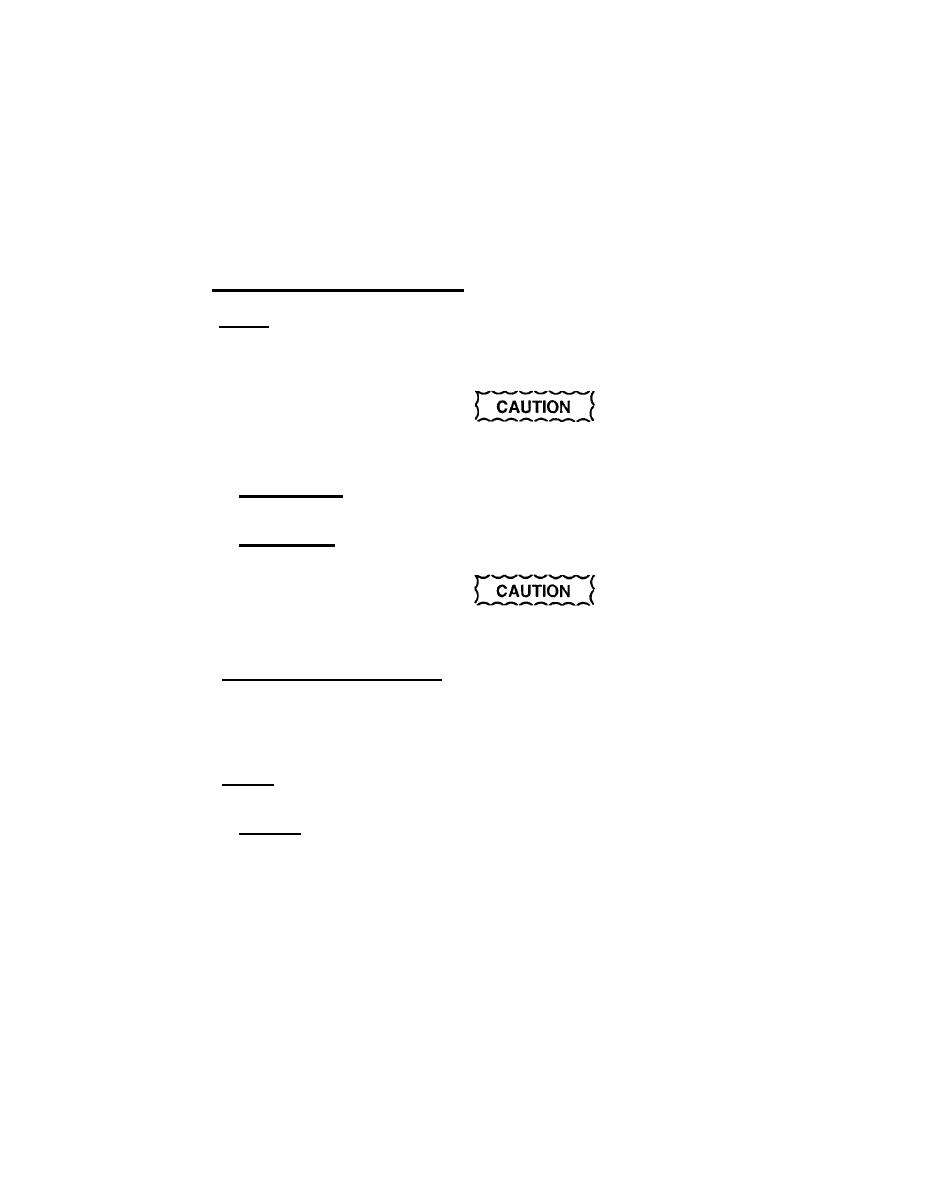
TM 9-4120-378-14
NOTE
The air conditioner can be equipped for operation in chemical, biological, radiolog-
ical (CBR) environment by connecting filtering equipment to the rectangular
covered opening at the lower left side of the rear surface of the unit.
2.11 OPERATION IN EXTREME COLD.
2.11.1 General. The air conditioner is designed to operate on the heating cycle in ambient temperatures as low as -50
F (-45 "C) and on the cooling cycle with O "F (- 18 `C) air entering the condenser and with 70F (21 `C) air entering the
To start unit in COOL mode at O "F (- 18 "C) ambient, have Unit Maintenance per-
sonnel jumper Low Pressure Cutout (LPCO) switch (S-5).
2.11.2 Before Operation. Before starting on cooling cycle be sure fabric cover is rolled up and secured. Clear all ice
and snow from openings. Be sure all dampers are in operating condition.
After Operation. Roll down and snap on fabric cover over condenser intake and outlet,
2.11.3
Do not disturb wiring during cold weather unless absolutely necessary. Cold tem-
peratures make wiring and insulation brittle and easy to break.
OPERATION IN EXTREME HEAT.
2.12
NOTE
Unit Preventive Maintenance Checks and Services (PMCS) should be performed
at daily intervals.
2.12.1 General. The air conditioner is designed to operate in temperatures up to 120 `F (49 "C). Extra care should
be taken to minimize the cooling load when operating in extreme high temperatures.
2.12.2 Protection.
a. Check all openings in the enclosure, especially doors and windows, to be sure they are tightly closed. Limit in
and out traffic if possible.
b. When appropriate, use shades or awnings to shutout direct rays of the sun.
c. When possible, limit the use of electric lights and other heat producing equipment.
d. Limit the amount of hot, outside air introduced through the fresh air damper to that essential for verntilation.
NOTE
Weatherstripping, the installation of storm doors, and windows, if appropriate, and
insulation of surfaces exposed to the outside is recommended when operating in ex-
tremely high temperatures for extended periods.

